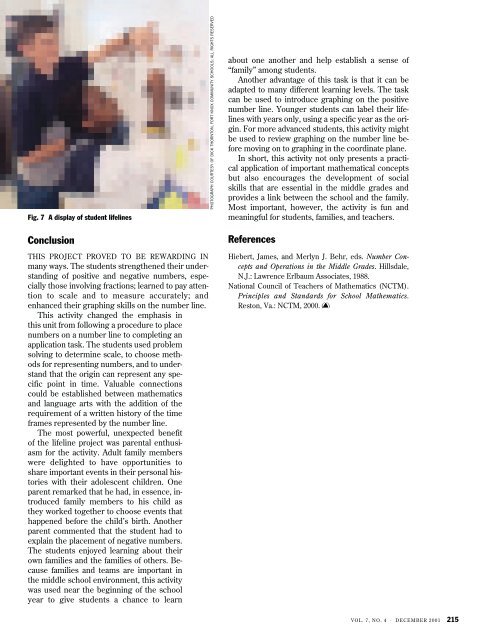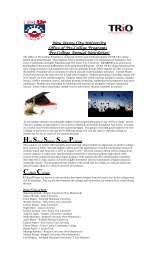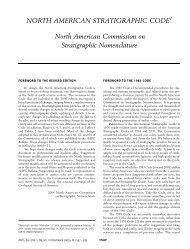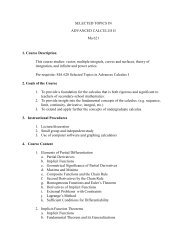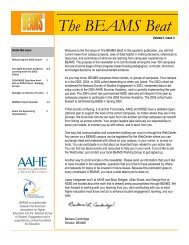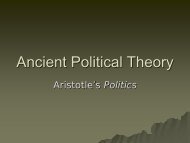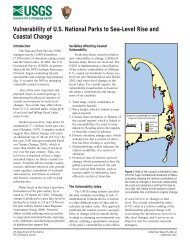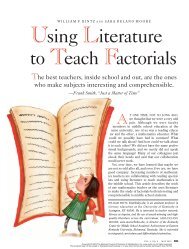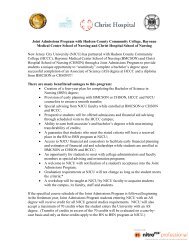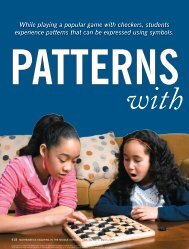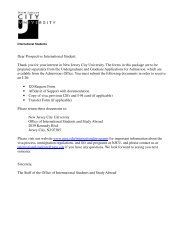Using a Lifeline to Give Rational Number a
Using a Lifeline to Give Rational Number a
Using a Lifeline to Give Rational Number a
- No tags were found...
Create successful ePaper yourself
Turn your PDF publications into a flip-book with our unique Google optimized e-Paper software.
Fig. 7 A display of student lifelinesConclusionPHOTOGRAPH COURTESY OF DICK THORNTON, FORT KNOX COMMUNITY SCHOOLS; ALL RIGHTS RESERVEDabout one another and help establish a sense of“family” among students.Another advantage of this task is that it can beadapted <strong>to</strong> many different learning levels. The taskcan be used <strong>to</strong> introduce graphing on the positivenumber line. Younger students can label their lifelineswith years only, using a specific year as the origin.For more advanced students, this activity mightbe used <strong>to</strong> review graphing on the number line beforemoving on <strong>to</strong> graphing in the coordinate plane.In short, this activity not only presents a practicalapplication of important mathematical conceptsbut also encourages the development of socialskills that are essential in the middle grades andprovides a link between the school and the family.Most important, however, the activity is fun andmeaningful for students, families, and teachers.ReferencesTHIS PROJECT PROVED TO BE REWARDING INmany ways. The students strengthened their understandingof positive and negative numbers, especiallythose involving fractions; learned <strong>to</strong> pay attention<strong>to</strong> scale and <strong>to</strong> measure accurately; andenhanced their graphing skills on the number line.This activity changed the emphasis inthis unit from following a procedure <strong>to</strong> placenumbers on a number line <strong>to</strong> completing anapplication task. The students used problemsolving <strong>to</strong> determine scale, <strong>to</strong> choose methodsfor representing numbers, and <strong>to</strong> understandthat the origin can represent any specificpoint in time. Valuable connectionscould be established between mathematicsand language arts with the addition of therequirement of a written his<strong>to</strong>ry of the timeframes represented by the number line.The most powerful, unexpected benefi<strong>to</strong>f the lifeline project was parental enthusiasmfor the activity. Adult family memberswere delighted <strong>to</strong> have opportunities <strong>to</strong>share important events in their personal his<strong>to</strong>rieswith their adolescent children. Oneparent remarked that he had, in essence, introducedfamily members <strong>to</strong> his child asthey worked <strong>to</strong>gether <strong>to</strong> choose events thathappened before the child’s birth. Anotherparent commented that the student had <strong>to</strong>explain the placement of negative numbers.The students enjoyed learning about theirown families and the families of others. Becausefamilies and teams are important inthe middle school environment, this activitywas used near the beginning of the schoolyear <strong>to</strong> give students a chance <strong>to</strong> learnHiebert, James, and Merlyn J. Behr, eds. <strong>Number</strong> Conceptsand Operations in the Middle Grades. Hillsdale,N.J.: Lawrence Erlbaum Associates, 1988.National Council of Teachers of Mathematics (NCTM).Principles and Standards for School Mathematics.Res<strong>to</strong>n, Va.: NCTM, 2000. CVOL. 7, NO. 4 . DECEMBER 2001 215


